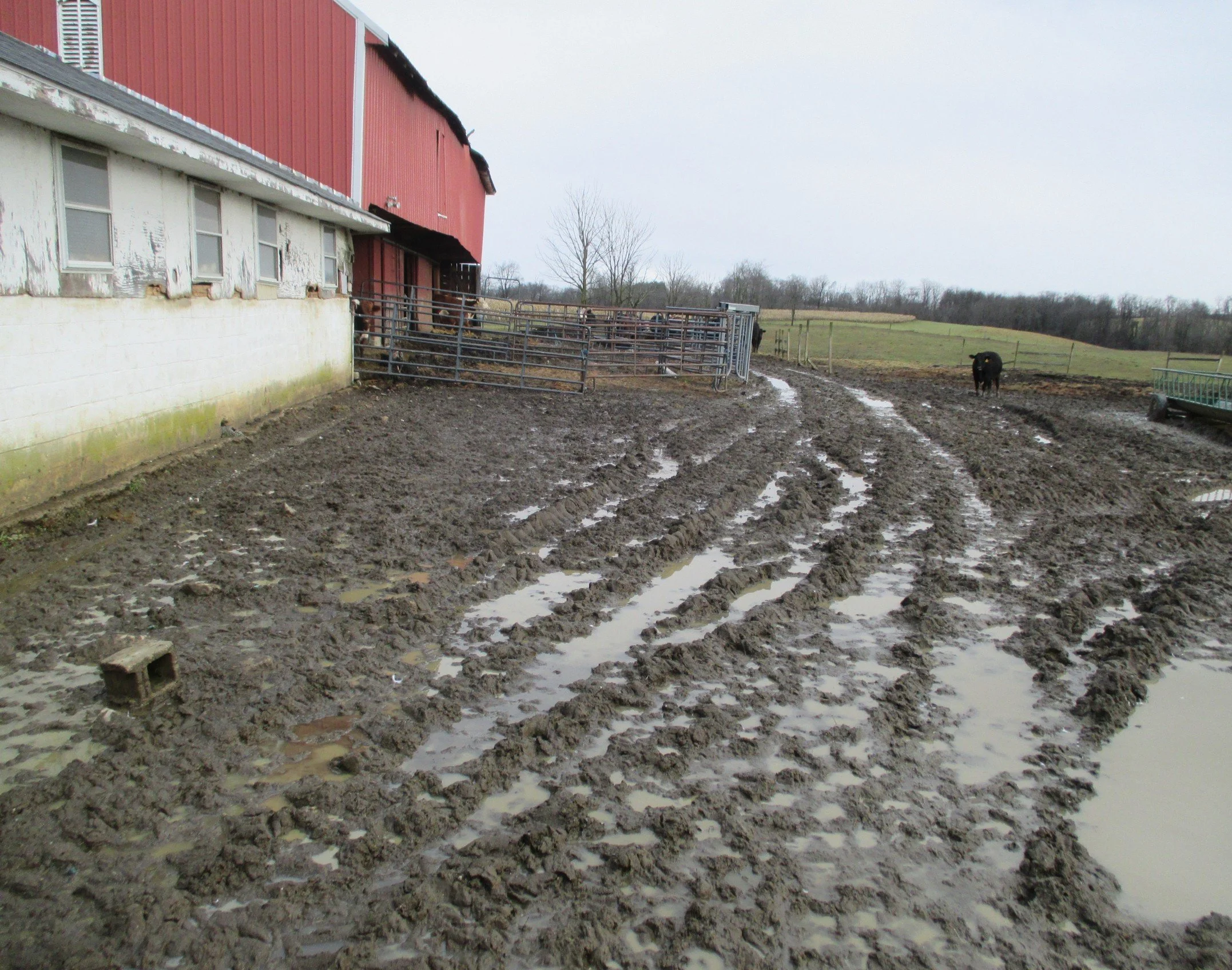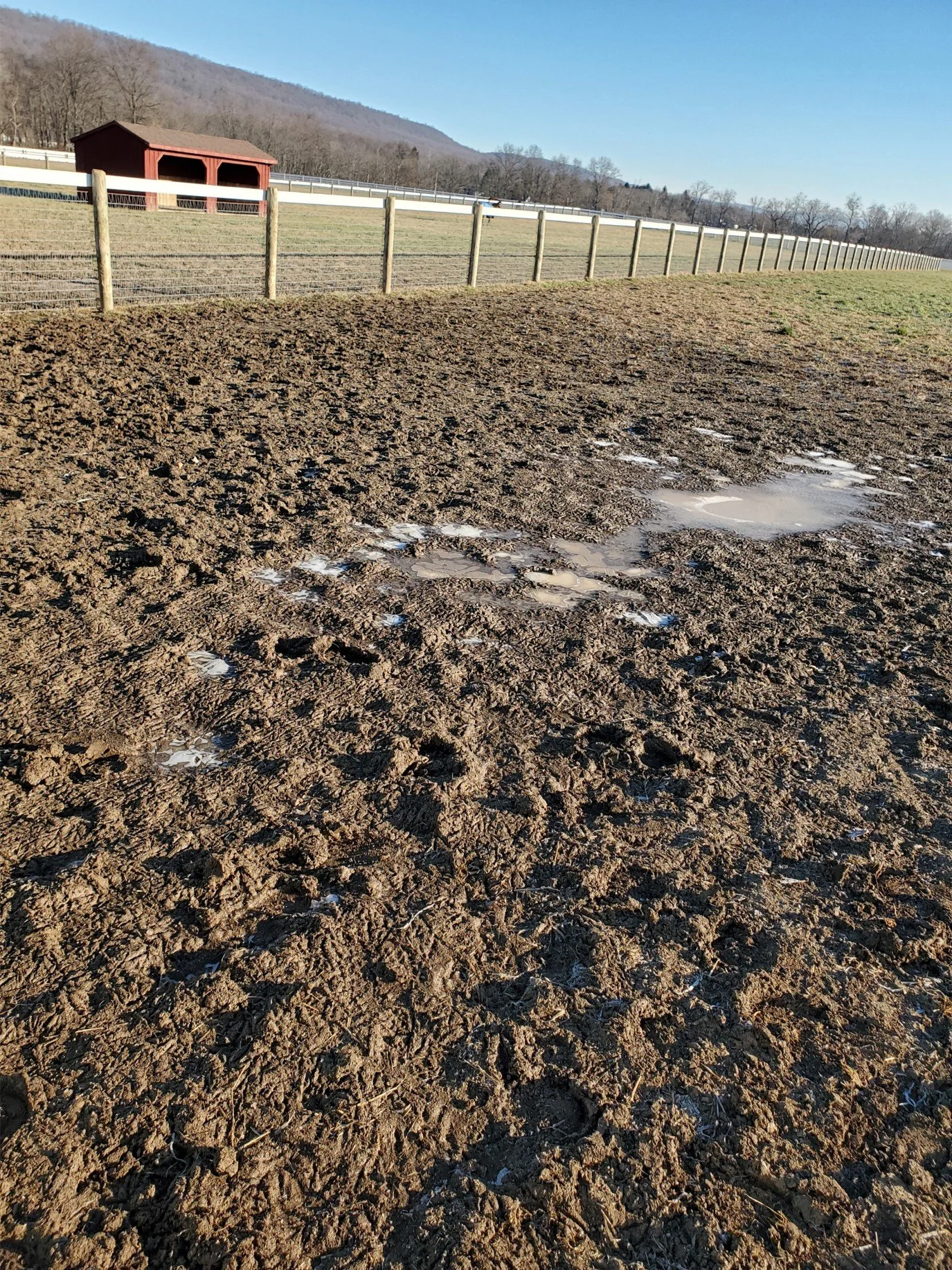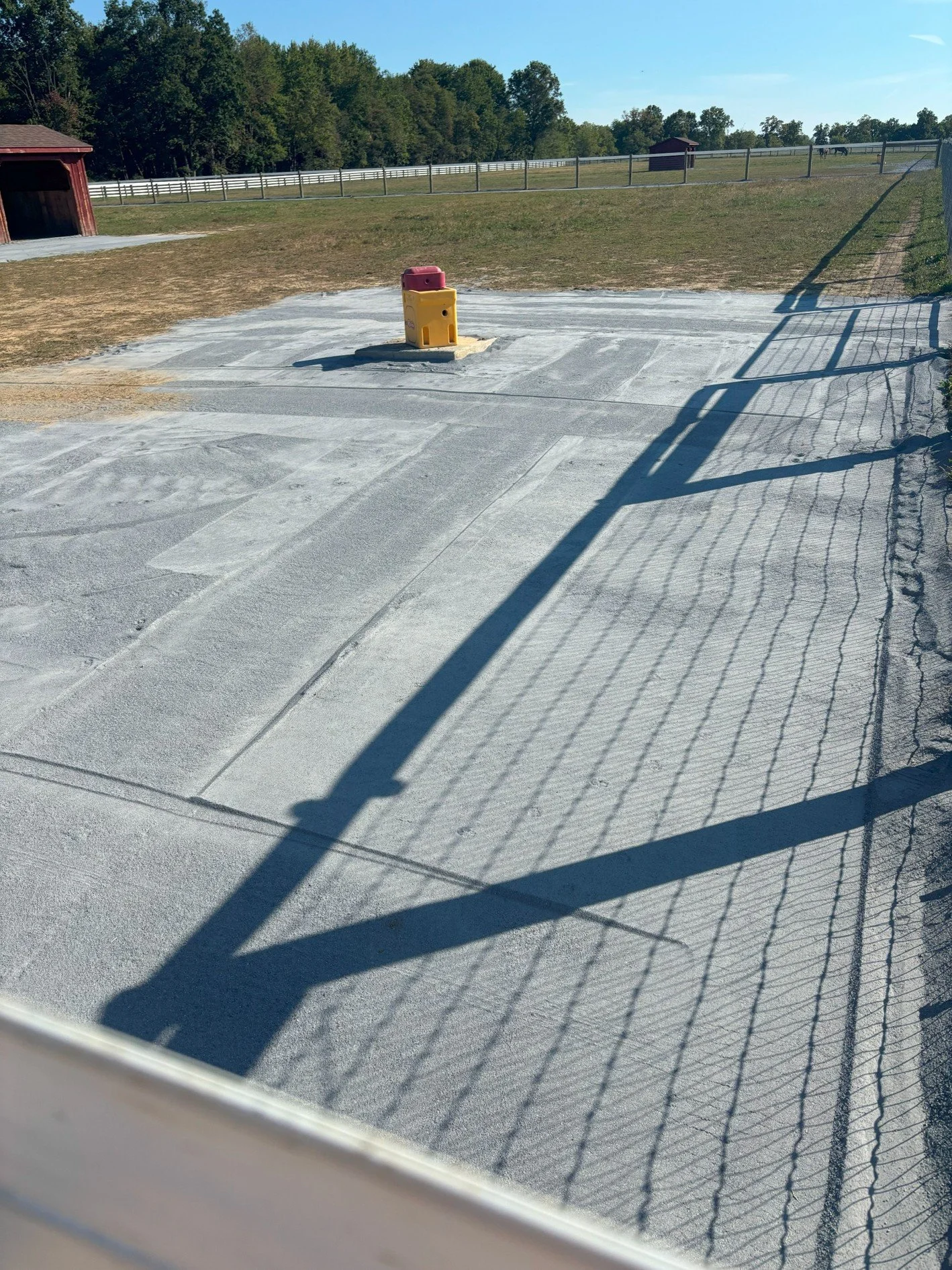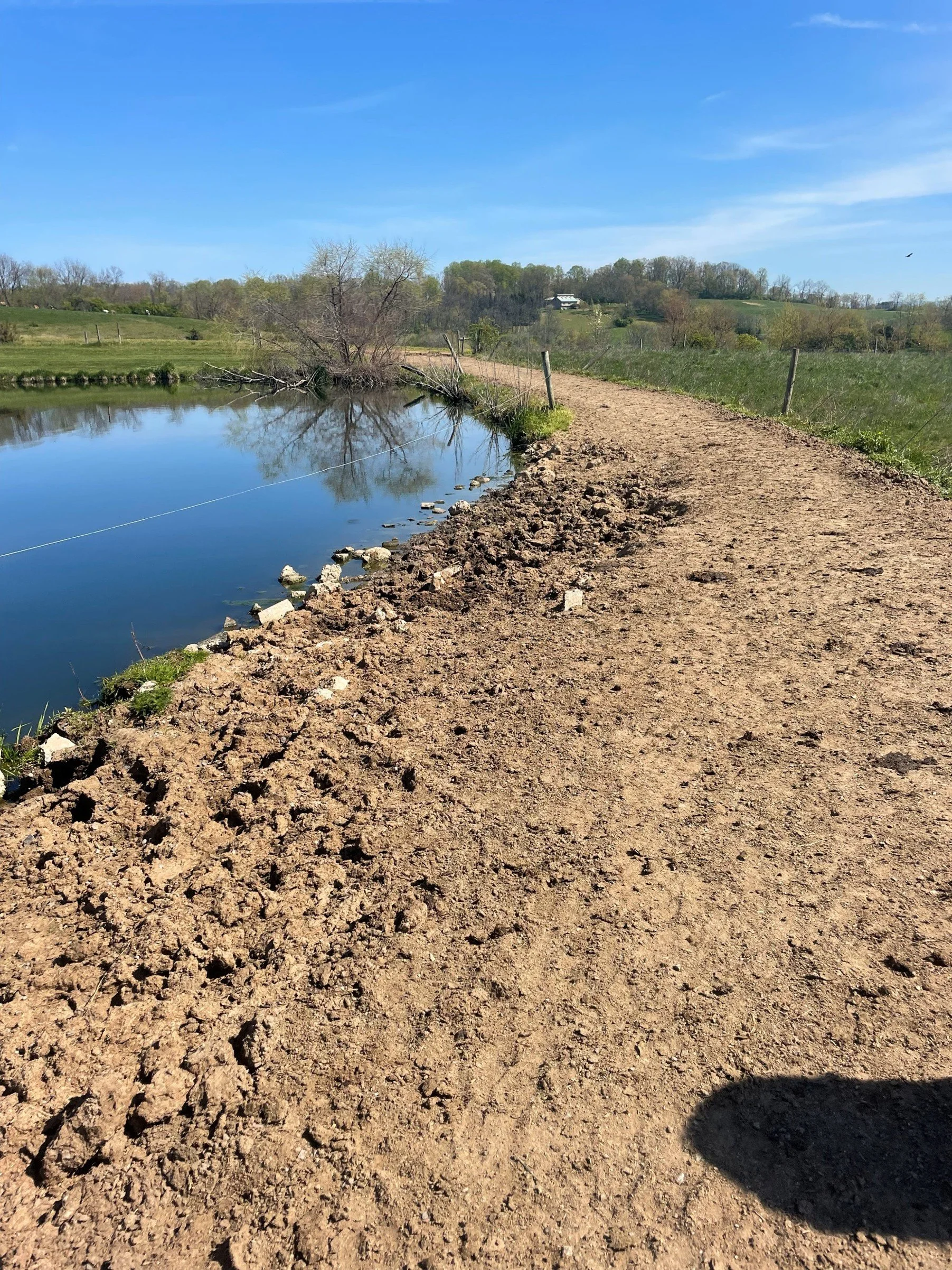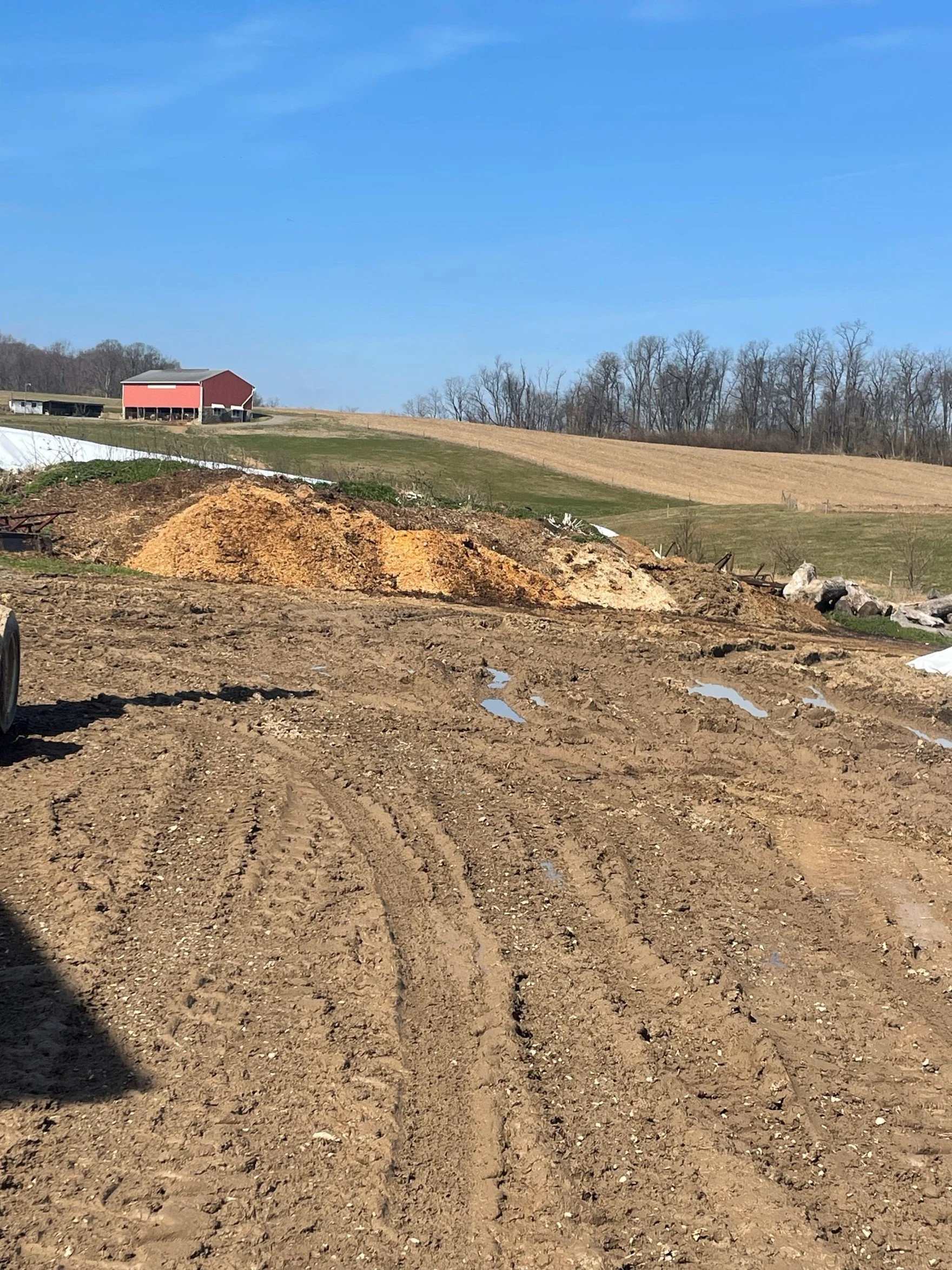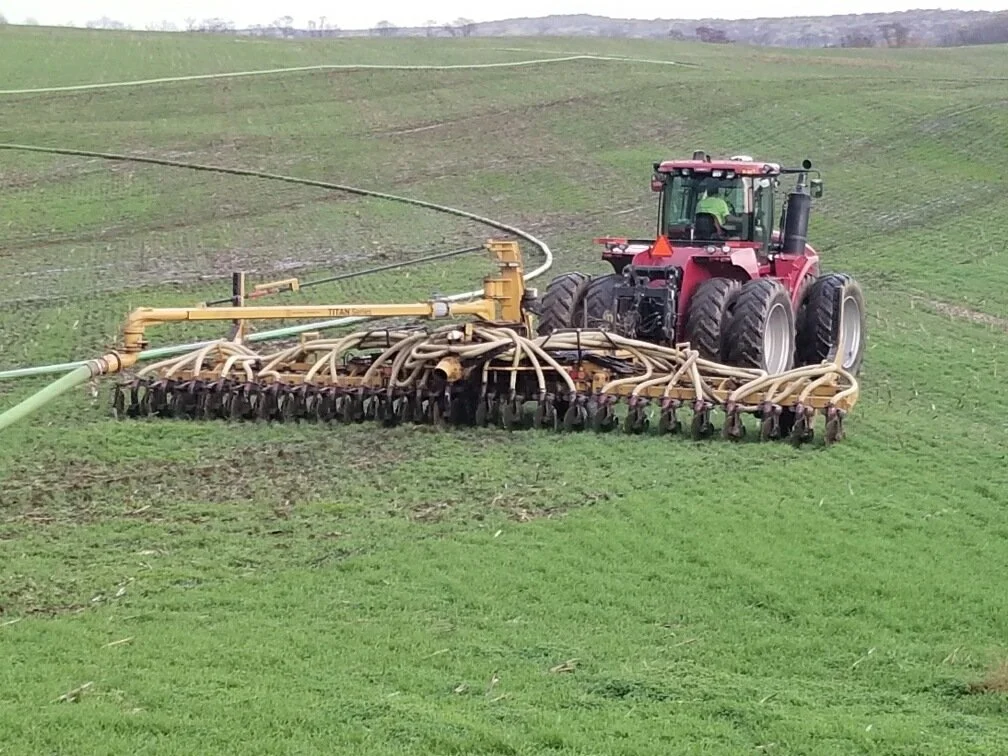
Agricultural Projects
OUR MISSION
To protect and promote wise stewardship and conservation of the natural resources of Lebanon County on both private and public lands; and to educate and encourage all people to share in this worthy mission.
HEAVY USE AREA STABILIZATION
Heavy Use Area Stabilization involves managing high-traffic farm areas like feed lots, gateways, and equipment storage sites where livestock and machinery have caused soil compaction, vegetation loss, and erosion potential.
Benefits
Prevents soil erosion and water contamination while maintaining functional farm operations.
Stabilization measures include proper drainage, surface treatments (gravel/concrete), and strategic placement away from water sources.
Protects water quality, reduces mud problems, improves animal health, and ensures regulatory compliance while preserving farm efficiency.
Cattle Crossing
Cattle crossings help minimize erosion and sediment build-up, preserving the stream's quality. As well as providing controlled access for livestock to reach pastures that may be difficult to access otherwise.
Benefits
They reduce nutrient and pathogens that can contaminate waterways.
Improve cattle health by reducing the risk of disease and injury from mud and waterborne pathogens.
Are a part of a broader conservation strategy that includes other practices like stream bank fencing and alternative watering sources.
Cattle Walkways
Cattle walkways facilitate the movement of cattle from pasture to pasture and access structures or barns.
Benefits
They encourage cattle to clump into herds, making it easier for handlers to manage them.
Provides a safe path for cattle, reducing the risk of accidents during handling.
Walkways streamline operations, allowing for faster and more organized handling of cattle.
Water Quality Projects
Immediate Benefits
80% reduction in stream bank erosion and phosphorus pollution
Allows natural vegetation to reestablish along stream banks
Creates riparian buffers that filter runoff and trap sediment
Improves livestock health by providing cleaner water sources and preventing waterborne diseases
Stream bank fencing
Creates a physical barrier that excludes livestock from directly accessing streams and waterways
Prevents livestock trampling that destroys stream banks and causes severe erosion
Eliminates direct manure deposits into water - livestock waste accounts for 19% of nitrogen and 26% of phosphorus pollution reaching the Chesapeake Bay
Pasture Management
Optimizes forage production and livestock nutrition while preventing soil compaction
Acts as natural filter, capturing sediment and nutrients before reaching waterways
Supports beneficial insects, birds, and soil microorganisms while creating habitat corridors
Reduces supplemental feed costs and extends productive life of grazing lands
rotational Grazing
Increases forage production by 25-40% compared to continuous grazing
Improves soil fertility through even manure distribution and reduces fertilizer needs
Enhances livestock health through parasite cycle disruption and higher-quality forage access
Prevents overgrazing, allowing native plant recovery and stronger root systems
Bay Benefits
Agriculture is the single largest pollution source - contributing 42% of nitrogen pollution to the Chesapeake Bay
Farmland covers only 23% of the watershed but produces 58% of sediment and phosphorus pollution
Direct watershed connection - local streams flow into the Chesapeake Bay system
Proven conservation impact - each fenced stream contributes to Bay-wide water quality improvement
Grass Waterways
Prevents costly gully formation and soil loss in natural drainage areas
Protects valuable topsoil and maintains field productivity in vulnerable areas
Eliminates expensive repairs and prevents loss of agricultural land to erosion
Promotes groundwater recharge by slowing water flow and increasing infiltration
Buffers
Improves adjacent crop yields through windbreak protection
Provides critical habitat while creating temperature-moderated stream conditions
Stabilizes streambanks, reduces flood damage, and supports diverse plant communities
Manure Management
Manure Management Projects can help to prevent:
Excessive plant growth in lakes and rivers that uses up oxygen and creates "dead zones" where fish and other water animals can't survive.
Toxic algae growth in lakes and ponds that produces poisons dangerous to people and animals who drink the water or swim in it.
Harmful chemicals from seeping deep into soil and contaminating water sources by allowing farmers to apply manure at the right time and amount.
Underground water from staying poisoned for years or decades, unlike surface water that can eventually clean itself naturally.
Manure Storage
Nutrients from improperly managed manure can reach water sources through runoff or leaching, making proper storage essential for preventing contamination
Proper Manure Storage helps prevent:
Valuable crop nutrients like nitrogen, phosphorus, and potassium from being lost to the environment before they can be applied to fields.
Water and air pollution by containing manure runoff and emissions, helping farms meet environmental regulations and operate sustainably.
Nutrient degradation and contamination by properly storing manure under controlled conditions that maintain its effectiveness as a natural fertilizer.
PSNT Testing
A soil test that measures the amount of nitrate nitrogen available in the soil at the time when the crop is most likely to start using it
PSNT testing helps:
Determine whether corn crops need additional fertilizer by measuring existing nitrogen levels in the soil to ensure optimal growth.
Prevent wasteful over-application of nitrogen fertilizer by providing precise recommendations for how much and when to apply nutrients for better crop yields.
Stop nitrogen waste that pollutes water sources while also reducing fertilizer costs and maximizing crop production through precise nutrient management.
Prevent guesswork and costly mistakes in fertilizer application by giving farmers accurate soil measurements to base their nitrogen decisions on.
Manure Injection
Injecting manure allows the nutrients from the manure to be utilized efficiently and effectively while also decreasing soil and nutrient contamination to local waterways. This program is intended to incentivize agricultural operators interested in trying manure injection at a lower cost
Proper Manure Storage helps prevent:
Ammonia gas losses and nitrogen volatilization by placing manure directly into the soil where nutrients are better retained for crop use.
Poor nutrient conversion by thoroughly mixing manure into soil, promoting mineralization that makes more nitrogen available to plants.
Nutrient losses that occur with surface spreading by conserving more nutrients and increasing the fertilizer value of the applied manure.
Manure Management PLan
A tool for producers to use when they plan their nutrient placement to optimize crop production
Manure Management Plans help prevent:
Pollution and water contamination by controlling runoff from farms into nearby streams, rivers, and groundwater sources.
Soil degradation by enriching farmland with natural nutrients that improve soil structure, fertility, and crop yields.
Expensive fertilizer bills by using manure as a natural alternative to costly synthetic fertilizers.
Waste and lost productivity by optimizing how manure is stored, applied, and used across farming operations.
Harmful farming practices that damage the environment by promoting long-term agricultural methods that protect natural resources.
Our Tax Dollars at Work
Projects Completed in 2024
10 Manure Storages Built/Compost Barns
6 Stream Bank Fencing and Cattle Crossing
5 Cattle Walkways and Rotational Grazing Set up
8 Waterways Constructed
17 Heavy Use Areas Stabilized or Roofed
Projects Approved for 2025
12 Manure Storage
24 Beef/Equine Stabilized HUA
4 Stream Bank Fencings
4 Rotational Grazing Fencing
2 Waterways
5 Cattle Walkways
3 Cattle Stream Crossings
In conclusion
LCCD's agricultural conservation projects embody our commitment to preserving Lebanon County's farming heritage while protecting our natural resources. These projects represent our shared legacy, ensuring that the land that has sustained our community for generations will continue to thrive for those who come after us. Through partnership and practical conservation, we're building a sustainable future for Lebanon County agriculture.



